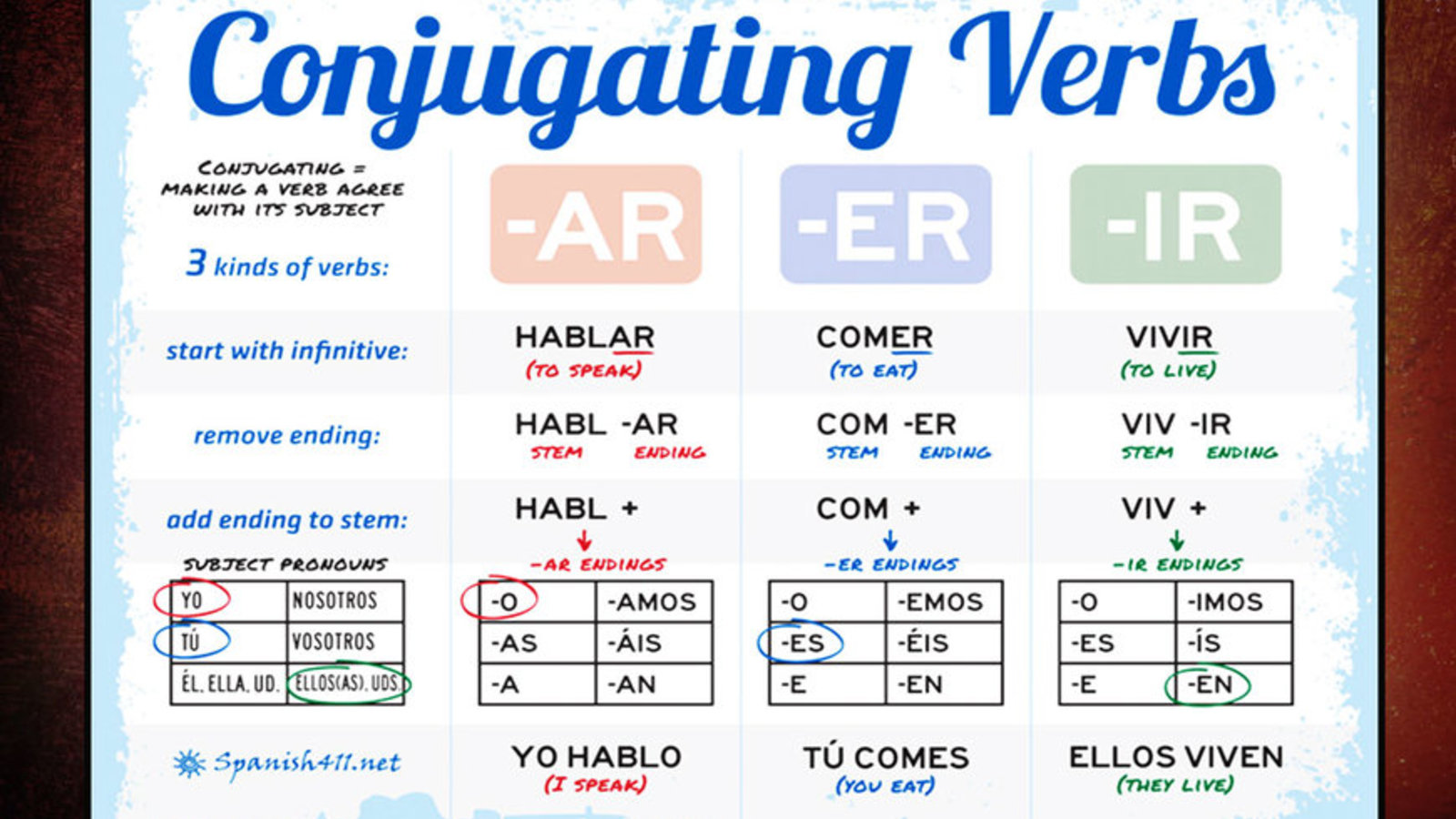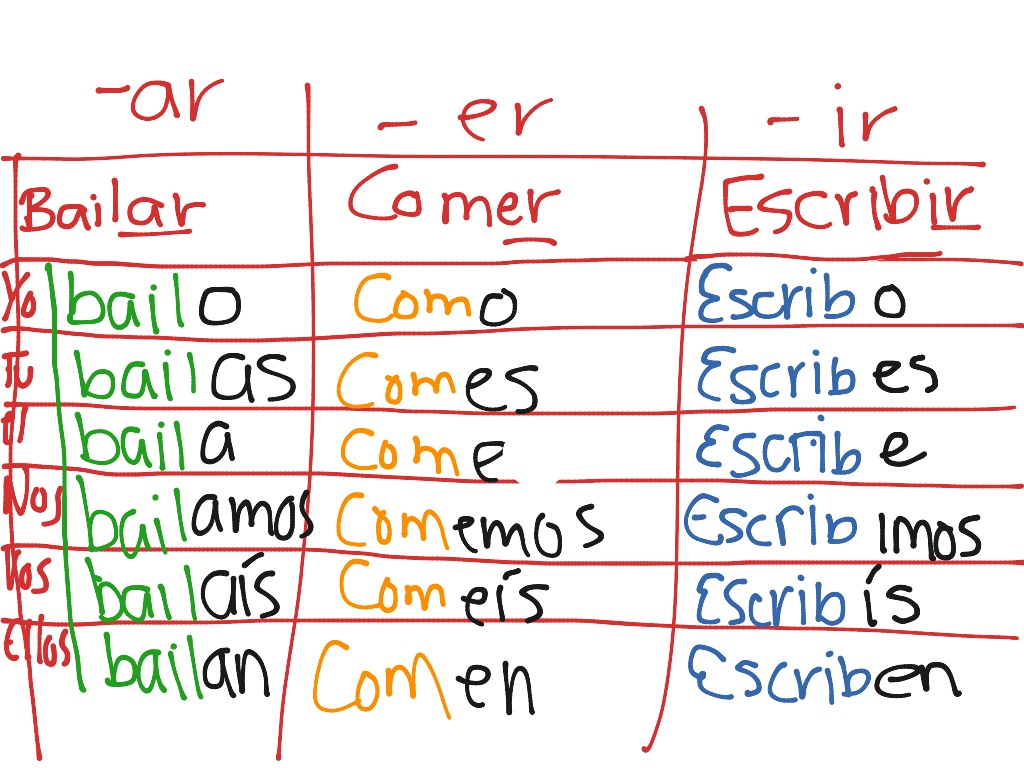
The verb stem “viv-” is followed by the ending “ -imos.”

Identify the verb stem: Remove the “ -ir” ending from the infinitive form of the verb.ir verbs, while similar to -er verbs, have their own set of endings. Ellos/Ellas/Ustedes comen (They/You all eat): The third-person plural form represents “they” or “you all.” The subject pronouns “ellos” (masculine), “ellas” (feminine), or “ustedes” (you all) are followed by the verb stem “com-” and the ending “ -en.”.The verb stem “com-” is followed by the ending “ -emos.” Nosotros/Nosotras comemos (We eat): The first-person plural form denotes “we” and uses the subject pronouns “nosotros” (masculine) or “nosotras” (feminine).These pronouns are followed by the verb stem “com-” and the ending “ -e.” Él/Ella/Usted come (He/She/You formal eat): The third-person singular form uses the subject pronouns “él” (he), “ella” (she), or “usted” (you formal).Tú comes (You eat): The second-person singular form, “tú,” requires the verb stem “com-” and the ending “ -es.”.Yo como (I eat): The first-person singular form, “yo,” is followed by the verb stem “com-” and the ending “ -o.”.Let’s examine the conjugations using the verb “ comer” (to eat): Add the appropriate endings: Attach the corresponding endings to the verb stem based on the subject pronoun.For example, let’s take the verb “ comer” (to eat). Identify the verb stem: Remove the “ -er” ending from the infinitive form of the verb.To conjugate -er verbs in the simple present tense, follow these steps:


In this lesson you’ll learn about another set of conjugations in the simple present tense: the -er and -ir verbs. For example, hablar, caminar and estudiar. Changing the playback speed will NOT affect sound quality.In the previous lesson on the Spanish Simple Present Tense, you learned to use the simple present tense with regular -ar verbs – ones that follow simple rules that are easy to understand and use.

Video too fast or too slow for you? Change the playback speed of the video quickly. We were all wanting to travel to the sea. The first and third person singular forms are identical, therefore the context must distinguish between the two. Ten + (ending) -> ten ía, ten ías, ten ía, ten íamos, ten íais, ten ían Let's review the verb tener (to have) as an example: The imperfect tense of regular -er and -ir verbs take place by substituting the "er" and "ir" ending by ía, ías, ía, íamos,íais, ían.


 0 kommentar(er)
0 kommentar(er)
